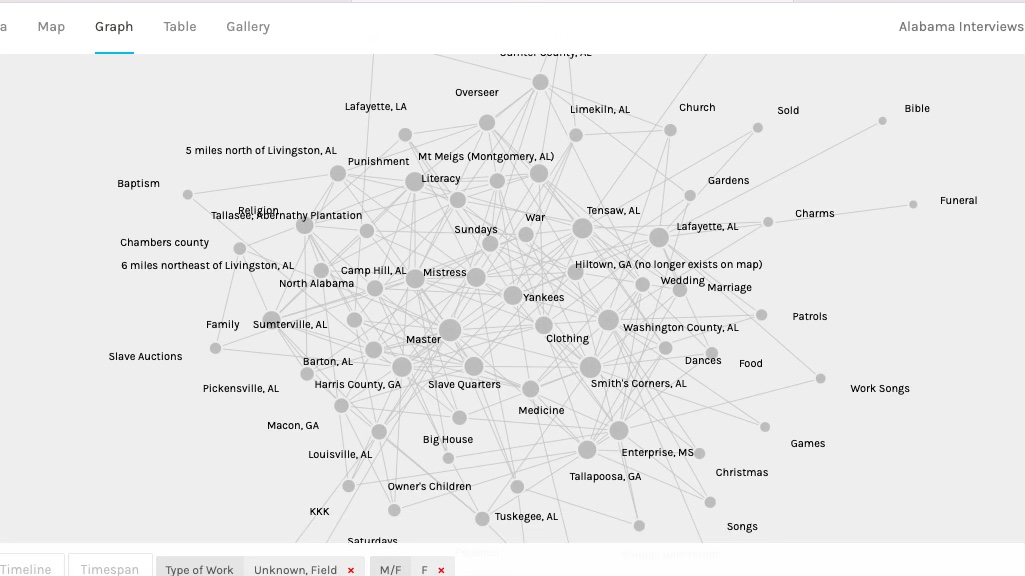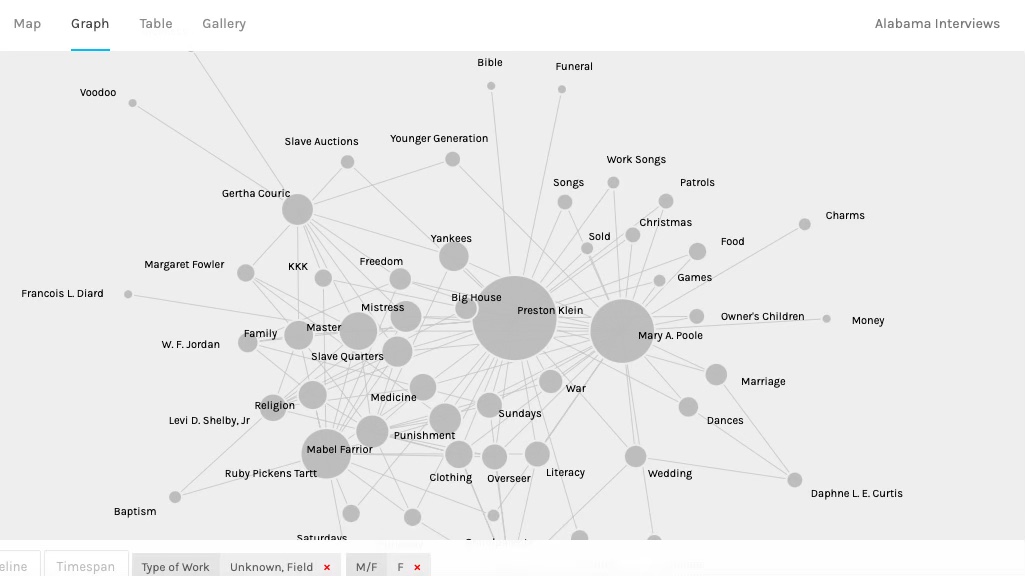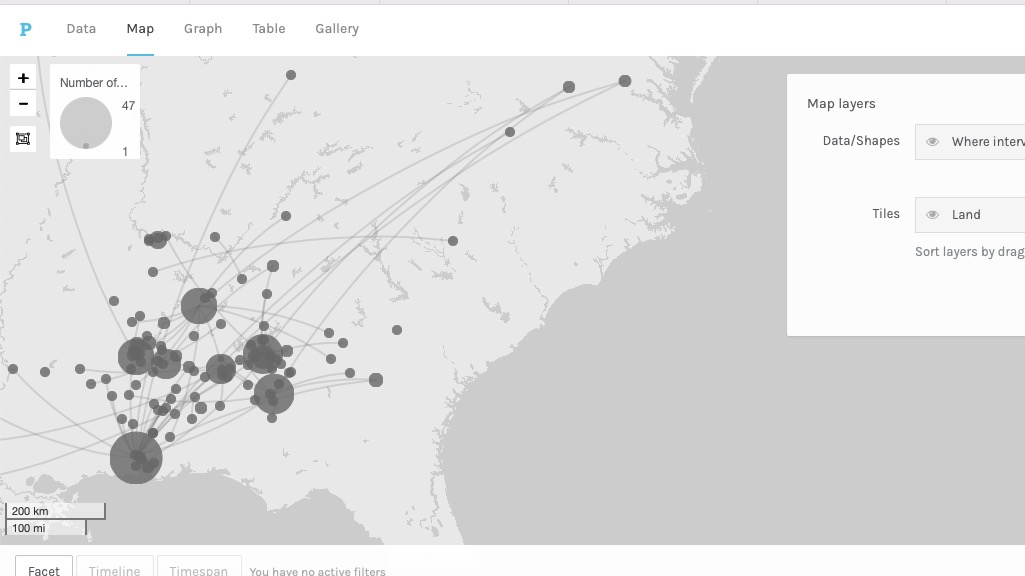Network graphing tools allow users to discover the ways in which people and ideas are interconnected through charts, graphs and maps. It assists users in finding patterns or trends in large volumes of data that are too cumbersome and time consuming to discover through reading or individual analysis alone.
The network graphing tool Palladio, developed at Stanford University, is a data visualization tool that allows users to create networks of relationships based on uploaded data sets of voluminous textual materials, such as correspondence between intellectuals of the early republic. With Palladio’s filter application, users can more specifically target the relationship connections between people and places. For example, by using the data set from the Alabama Interviews of former enslaved persons, users can specify the network of connections for only male enslaved, or only female enslaved, and where specifically they were forced to endure hard labor. Users can also visually see the geographic distance between where they were interviewed in the 1930s as part of the Works Progress Administration, compared to where they were enslaved. Filtering by categories and topics allows the user to make even more connections between people and places, such as by displaying the aspects of life that the enslaved mentioned in their interviews.
After using Palladio, my thoughts on using network graphing tools for conducting research and further study, and for educational means, was definitely strengthened. It was fascinating to see the visual connections between people, topics and their geographic location. Adding visuals helps in expanding historic information.
Network graphing tools are useful for their ability to create visualizations of the relationship connections between people and ideas, and geographic locations. Through interconnected lines, similar to a family tree, users can see who was connected to others, but also who, or what, was not connected.


